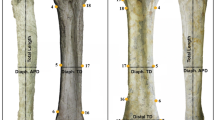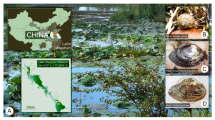Abstract
We examined a recent taxonomic appraisal of Cebuella by Boubli et al. With an increased sample spanning most of the geographic range of the genus, we investigated ventral pelage variation in Cebuella to test the proposition of Boubli et al. that there were three geographically-restricted phenotypes. Additionally, we conducted a model-based species delimitation test using published cytochrome b data and verified the type localities of the available nomina. Contrary to Boubli et al., our analysis showed that ventral pelage of Cebuella varies consistently along geography, indicating the existence of two species-group taxa, not three as suggested by the former authors. The model-based species delimitation also indicated that Cebuella is composed of more than one species. The range of the two species proposed here is different than assumed by previous authors, with one taxon occurring north of middle/lower Rio Solimões and Río Napo and the other from south of these rivers. After an extensive literature review, we show that the type locality of Cebuella pygmaea can be reliably restricted to the northern margin of Rio Solimões. Consequently, the oldest available names for the two species are Cebuella pygmaea for the populations north of middle/lower Rio Solimões and Río Napo, and Cebuella niveiventris for the populations south of these rivers.
Similar content being viewed by others

References
Barroso, C.M.L., Schneider, H., Schneider, M.P.C., Sampaio, I., Harada, M.L., Czelusniak, J., Goodman, M., 1997. Update on the phylogenetic systematics of new world monkeys: further DNA evidence for placing the pygmy marmoset (Cebuella) within the genus Callithrix. Int. J. Primatol. 18, 651–674.
Boubli, J.P., da Silva, M.N.F., Rylands, A.B., Nash, S.D., Bertuol, F., Nunes, M., Mittermeier, R.A., Byrne, H., Silva, F.E., Röhe, F., Sampaio, I., Schneider, H., Farias, I.P., Hrbek, T., 2018. How many pygmy marmoset (Cebuella Gray, 1870) species are there? A taxonomic re-appraisal based on new molecular evidence. Mol. Phylogenet. Evol. 120, 170–182, http://dx.doi.org/10.1016/j.ympev.2017. 11.010.
Cabrera, A., 1958. Catalogode los mamíferos de América Del Sur. Revistadel Museo Argentino de Ciencias Naturales “Bernardino Rivadavia”. Ciencias Zoológicas 4, 1–307.
Carvalho, C.T., 1957. Alguns mamíferos do Acre ocidental. Bol. Mus. Para. Emilio Goeldi. Zool. 6, 1–22.
Coimbra-Filho, A.F., 1990. Sistemática, distribuiçcão geográfica e situação atual dos símios brasileiros (Platyrrhini-Primates). Rev. Bras. Biol. 50, 1063–1079.
da Cruz-Lima, E., 1945. Mamiferos da Amazonia. Volume I: Introduçãogeral e primatas. Museu Paraense Emilio Goeldi de Historia Natural e Etnografia, Belém.
Elliot, D.G., 1913. A Review of the Primates. American Museum of Natural History, New York.
Fujisawa, T., Barraclough, T.G., 2013. Delimiting species using single-locus data and the generalized mixed yule coalescent approach: a revised method and evaluation on simulated data sets. Syst. Biol. 62, 707–724.
Garbino, G.S.T., 2015. How many marmoset (Primates: Cebidae: Callitrichinae) genera are there? A phylogenetic analysis based on multiple morphological systems. Cladistics 31, 652–678, http://dx.doi.org/10.1111/cla.12106.
Garbino, G.S.T., Martins-Junior, A.M.G., 2017. Phenotypic evolution in marmoset and tamarin monkeys (Cebidae, Callitrichinae) and a revised genus-level classification. Mol. Phylogenet. Evol. 118, 156–171, http://dx.doi.org/10.1016/j.ympev.2017.10.002.
Garbino, G.S.T., Rezende, G.C., Valladares-Padua, C., 2016. Pelage variation and distribution of the black lion tamarin, Leontopithecus chrysopygus. Folia Primatol. 87, 244–261.
Geoffroy, I., 1851. Catalogue méthodique de la collection des mammifères de la collection des oiseaux et des collections annexes. Gide et Baudry, Paris.
Geoffroy, I., 1855. Primates. In: Gervais, P. (Ed.), Animaux nouveaux ou rares recueillis pendant l’expédition dans les parties centrales de l’Amérique du Sud, de Rio de Janeiro à Lima, et de Lima au Para; executée par ordre du gouvernement français pendant les années 1843 à 1847, sous la direction du Comt. P. Bertran, Paris, pp. 1–24.
Gray, J.E., 1866. Notice on some new species of marmoset monkeys (Hapale and Midas). Proc. Zool. Soc. Lond. 1865, 733–735.
Groves, C.P., 2001. Primate Taxonomy. Smithsonian Institution Press, Washington, DC Groves, C.P., 2005. Order primates. In: Wilson, D.E., Reeder, D.M. (Eds.), Mammal Species of the World. A Taxonomic and Geographic Reference., third ed. Johns Hopkins University Press, Baltimore, MD, pp. 111–184.
Hershkovitz, P., 1977. Living New World Monkeys (Platyrrhini), with an Introduction to Primates, vol. 1. Chicago University Press, Chicago, IL.
Hill, W.C.O., 1957. Primates. Comparative Anatomy and Taxonomy III. Pithecoidea Platyrrhini (Families Hapalidae and Callimiconidae). Edinburgh University Press, Edinburgh.
Kinzey, W.G., Rosenberger, A.L., Ramirez, M., 1975. Vertical clinging and leaping in a neotropical anthropoid. Nature 255, 327–328.
Lesson, R.P., 1840. Species de Mammifères: Bimanes et Quadrumanes; suivi d’un mémoire sur les Oryctéropes. J.B. Baillière, Paris.
Lönnberg, E., 1940. Notes on marmosets. Ark. För. Zool. 32A, 1–22.
Mello, B., Vilela, J.F., Schrago, CG., 2018. Conservation phylogenetics and computational species delimitation of neotropical primates. Biol. Conserv. 217, 397–406.
Mittermeier, R.A., Rylands, A.B., Coimbra-Filho, A.F., 1988. Systematics: species and subspecies—an update. In: Mittermeier, RA, Rylands, A.B., Coimbra-Filho, A.F., Fonseca, G.A.B. (Eds.), Ecology and Behavior of Neotropical Primates, vol. 2. World Wildlife Fund, Washington, DC, pp. 13–75.
Napier, P.H., 1976. Catalogue of Primates in the British Museum (Natural History), Part 1: Families Callitrichidae and Cebidae. British Museum (Natural History), London.
Napier, J., Napier, P.H., 1967. A Handbook of Living Primates. Academic Press, London.
Padial, J.M., Miralles, A., De la Riva, I., Vences, M., 2010. The integrative future of taxonomy. Front. Zool. 7, 16.
Papavero, N., 1971. Essays onthe History of Neotropical Dipterology, with Special Reference to Collectors (1750-1905), vol. 1. Museu de Zoologia, Universidade de São Paulo, São Paulo.
Rosenberger, A.L., 1981. Systematics: the higher taxa. In: Coimbra-Filho, A.F., Mittermeier, RA (Eds.), Ecology and Behavior of Neotropical Primates, vol. 1. Academia Brasileira de Ciências, Rio de Janeiro, pp. 9–27.
Rosenberger, A.L., 1984. Aspects of the systematics and evolution of the marmosets. In: de Mello, M.T. (Ed.), A Primatologia no Brasil, vol. 1. Sociedade Brasileira de Primatologia, Belo Horizonte, pp. 159–180.
Rylands, A.B., Coimbra-Filho, A.F., Mittermeier, R.A., 2009. The systematics and distributions of the marmosets (Callithrix, Callibella, Cebuella, and Mico) and callimico (Callimico) (Callitrichidae, Primates). In: Ford, S.M., Porter, L., Davis, LC (Eds.), The Smallest Anthropoids: The Marmoset/Callimico Radiation. Springer, New York, pp. 25–61.
Rylands, A.B., Mittermeier, R.A., 2013. Family Callitrichidae (marmosets and tamarins). In: Mittermeier, RA, Rylands, A.B., Wilson, D.E. (Eds.), Handbook of the Mammals of the World, Primates, vol. 3. Lynx Edicions, Barcelona, pp. 262–346.
Schneider, H., Bernardi, J.A.R., da Cunha, D.B., Tagliaro, C.H., Vallinoto, M., Ferrari, S.F., Sampaio, I., 2012. A molecular analysis of the evolutionary relationships in the Callitrichinae, with emphasis on the position of the dwarf marmoset. Zool. Scr. 41, 1–10.
Soini, P., 1988. The pygmy marmoset, genus Cebuella. In: Mittermeier, RA, Rylands, A.B., Coimbra-Filho, A.F., Fonseca, G.A.B. (Eds.), Ecology and Behavior of Neotropical Primates, vol. 2. World Wildlife Fund, Washington, DC, pp. 79–129.
Spix, J.B., 1823. Simiarum et Verspertilionum Brasiliensium Species Novae. F.S. Hübschmann, Munich.
Tagliario, C.H., Schneider, M.P.C, Schneider, H., Sampaio, I., Stanhope, M., 2000. Molecular studies of Callithrix pygmaea (Primates, Platyrrhini) based on transferrin intronic and ND1 regions: implications fortaxonomy and conservation. Genet. Mol. Biol. 23, 729–737.
Talavera, G., Dincă, V., Vila, R., 2013. Factors affecting species delimitations with the GMYC model: insights from a butterfly survey. Methods Ecol. Evol. 4, 1101–1110.
Townsend, W.R., 2001. Callithrix pygmaea. Mamm. Species 665, 1–6.
Van Roosmalen, M.G.M., Van Roosmalen, T., 1997. An eastern extension of the geographical range of the pygmy marmoset, Cebuella pygmaea. Neotrop. Primates 5, 3–6.
Vieira, C.O.C, 1955. Lista remissiva dos mamíferos do Brasil. Arquivos de Zoologia 8, 341–474.
Voss, R.S., Fleck, D.W., 2011. Mammalian diversity and Matses ethnomammalogy in Amazonian Peru part 1: primates. Bull. Am. Mus. Nat. Hist. 351, 1–81.
Wagner, J.A., 1833. Kritische Revision der brasilian Affenarten, welche Spix in seinem Werke: Simiarum et Vespertilionum Brasiliensium species novae, Monach. 1823, beschrieben hat. Isis von Oken 26, 988–1000.
Wagner, J.A., 1855. Die Säugthiere in Abbildungen nach der Natur mit Beschreibungen. L.D. Weigel, Leipzig.
Author information
Authors and Affiliations
Corresponding author
Rights and permissions
About this article
Cite this article
Garbino, G.S.T., Casali, D.M., Nascimento, F.O. et al. Taxonomy of the pygmy marmoset (Cebuella Gray, 1866): Geographic variation, species delimitation, and nomenclatural notes. Mamm Biol 95, 135–142 (2019). https://doi.org/10.1016/j.mambio.2018.09.003
Received:
Accepted:
Published:
Issue Date:
DOI: https://doi.org/10.1016/j.mambio.2018.09.003



